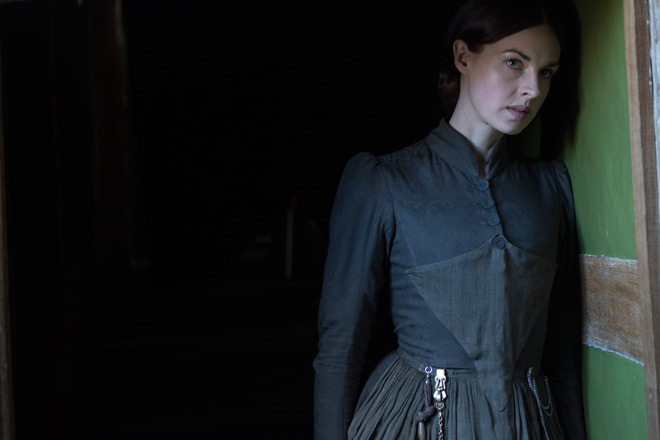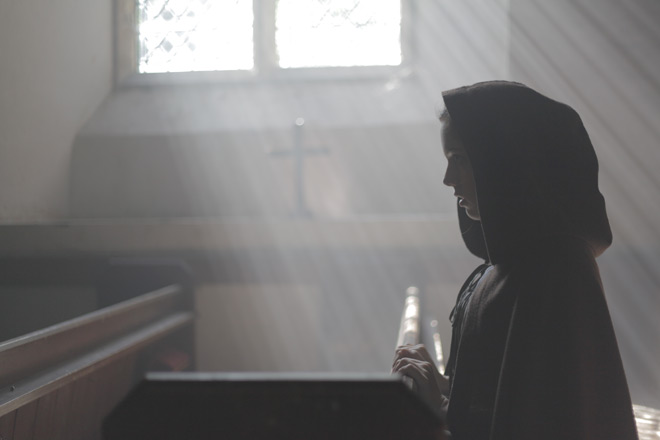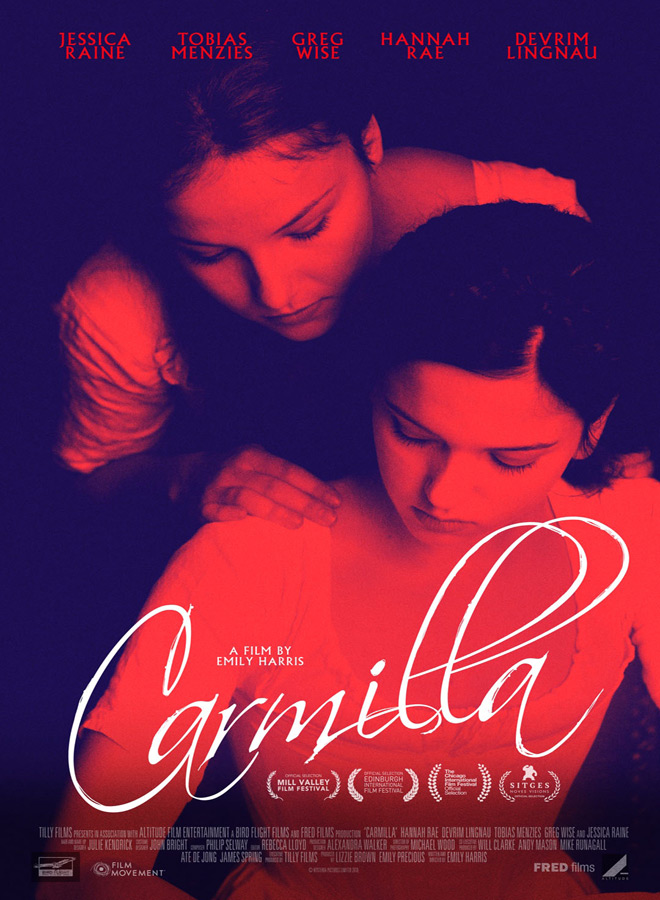Before there was Dracula there was Carmilla. Predating Bram Stoker’s legendary tale by 25 years, Carmilla is the 1872 Gothic novella by the Irish Author Joseph Sheridan L Fanu. The story replaces the typical brooding male lead with the equally as brooding female vampire Carmilla, who seduces a young woman named Laura. This sapphic vampire tale has been told in many different ways, inspiring other vampiric films and series’ such as Universal Pictures Dracula’s Daughter in 1936, down to a more modern take in YouTube’s mini-series titled Carmilla featuring our leads as college roommates. In its most recent retelling, Writer/Director Emily Harris film Carmilla offers a new adaptation which removes its vampire elements in favor of “supernatural subtlety” and atmospheric drama.

Released via Film Movement’s Virtual Cinema on Friday, July 17th, in a remote countryside manor, we have widowed Mr. Bauer (Greg Wise: Johnny English 2003, Last Christmas 2019) as he looks after his teenage daughter Lara (Hannah Rae: Broadchurch series, Fighting With My Family 2019) with the help of her governess Ms. Fontaine (Jessica Raine: Robin Hood 2010, The Woman in Black 2012). Ms. Fontaine’s strict approach to looking after Lara plays a huge part in Lara’s desire to rebel. It also influences to the film’s narrative of light versus dark in its relation to rebellion being seen as the devil’s influence. One of the most blatant examples of this is Ms. Fontaine forcibly tying Lara’s left hand behind her back so that she learns to wright right-handed, because being left-handed is a sign of the devil.
This notion is only intensified once Carmilla (Devrim Lingnau: Immortality 2018, Auerhaus 2019) quite literally crashes onto the scene. On a stormy night, a carriage crashes nearby the manor with only one survivor, a young woman (guess who), who is then taken to the house to be cared for. The local physician (Tobias Menzies: Rome series, The Crown series) is astounded by her lack of injuries as she is seemingly unharmed from the accident. They allow her to stay with them until they can determine her identity and where she was headed since she has no recollection of anything prior to the accident.
The newcomer’s presence excites Lara as she has been longing for change. The two become fast friends, with the young woman taking the name “Carmilla” at Lara’s suggestion. As the young women grow closer, their friendship turns into a budding romance. While this is all new and exciting for Lara, her governess Ms. Fontaine is less than thrilled by her emerging sexuality – especially after catching them in a rather compromising position.

Their sexual awakening quickly become an allegory for being overcome by the devil as tragedy begins to unfold around them. All this in mind, the main thing missing from this storyline is the vampire element. Without it, this becomes another dramatic tale with underlying supernatural tones with no payoff. Harris attempts to make up for this by relying heavily on the Gothic atmosphere, creating a beautifully dark aesthetic. As such, the film is visually pleasing with its mid-toned lighting and natural sounds that only grow darker as we progress through the story. It is both intoxicating and intense as it creates an alluring backdrop to this tragic romance.
Furthermore, the attention to detail is one of the strongest elements Carmilla has going for it. However, as beautiful as it may be, there is still something missing that the vampiric subtext could have provided. Without the addition of Carmilla being a vampire, the supernatural elements seem like an afterthought. Almost as if they decided to forgo character development and story elements for dream sequences and moody imagery. Since there is no real “monster” in this film, all of the demonic elements in regards to sexuality – in this case the two girls budding lesbianism – makes it more of a commentary on societal views on homosexuality rather than a vampire film.
All of these factors sparks the question…why not change the ending if the idea was to make a gothic romance instead of an outright Horror film? This is not a topic that is unknown and it is been explored many times before, so why not change the narrative? The amount of lesbian tales with happy endings is not as high as it should be. As a horror, it would have been more forgivable, but as a glorified drama, it leaves much to be desired.

Overall, Carmilla is an aesthetically beautiful and tragic tale of young love. It hit many of the right marks, but still managed to miss some of the ones that would have elevated the story to leave a lasting impression. It had the potential to be a solid vampire flick, but instead became another notch on the bedpost for lesbian stories with violent ends. For those reasons, Cryptic Rock gives Carmilla 2.5 out of 5 stars.





